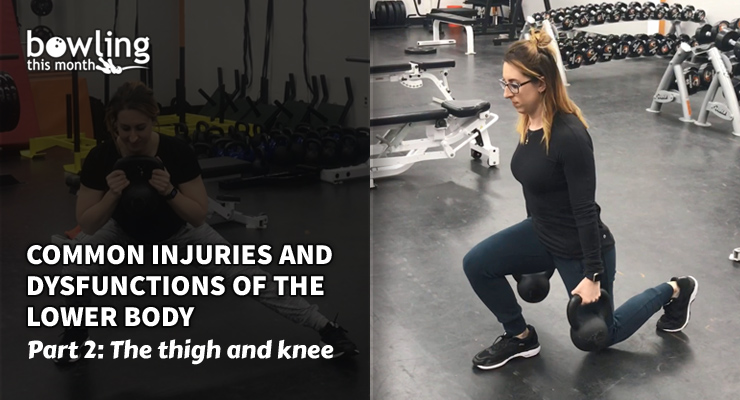Article Contents
- 1. Structual and postural deviations
- 2. Injuries
- 3. Exercises
- 3.1. Split squats
- 3.2. Hip lifts
- 3.3. Side lunges
- 3.4. Single leg deadlifts
Note: This article is only available to Bowling This Month subscribers.
In my previous article, I discussed common pathologies in the hip and pelvis that may be seen in bowlers. This included things like piriformis syndrome, SI joint dysfunction, and excessive anterior or posterior tilt.
In this article, I will go over some even more common injuries that bowlers may experience in the thigh and knee due to the nature of our sport. We’ll start by exploring structural and postural deviations that can lead to issues such as genu valgum, genu varum, and genu recurvatum. We’ll then look at actual tissue injuries, including patellofemoral pain syndrome, iliotibial band friction syndrome, and patellar tendinosis and bursitis.
Structual and postural deviations
Starting with the structural deviations, the most common that I see in the field of strength and conditioning with athletes in general is called genu valgum, or valgus knee. This is also often referred to as “knock knees.” This is commonly seen in children, but it is often grown out of. For some, however, this condition doesn’t normalize as they enter adulthood. Meniscal damage or a leg discrepancy can also lead to valgus knee.
Basically, genu valgum is when the knees come inward toward each other and often includes overpronation of the feet in conjunction. This often leads to patellar tracking disorders, which is seen as a high risk in female athletes for ACL tears due to lack of stability in the knee. While valgus knee is a structural deviation, it can be corrected through strengthening of the surrounding musculature and through soft tissue work. Individuals with this condition will benefit from lateral exercises in the frontal plane. Side lunges and step ups, walks with a resistant ...
Already a premium member? Click here to log in.


